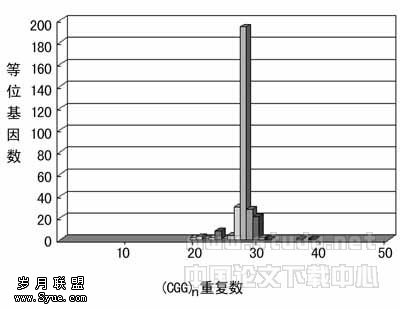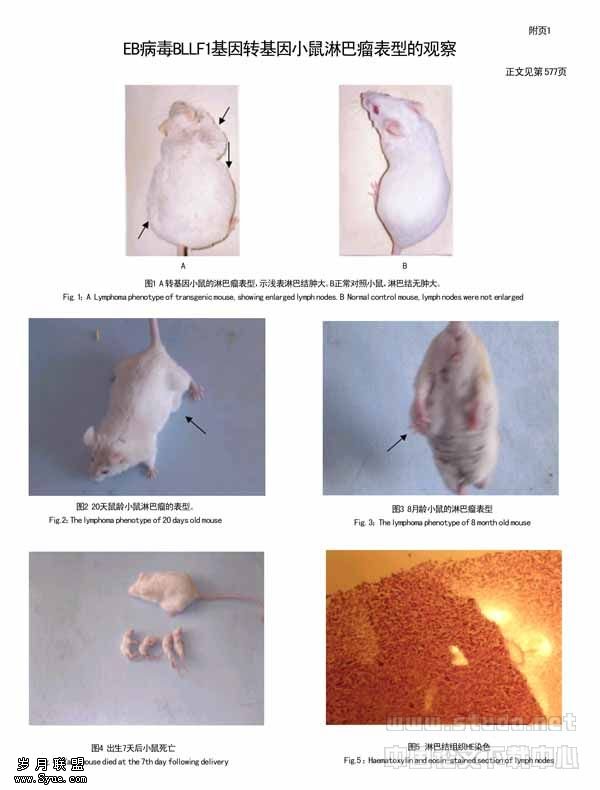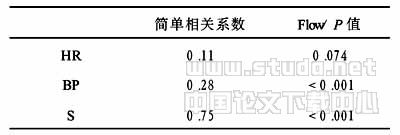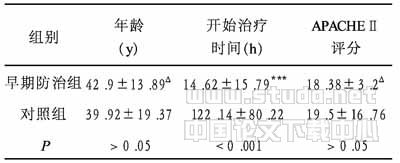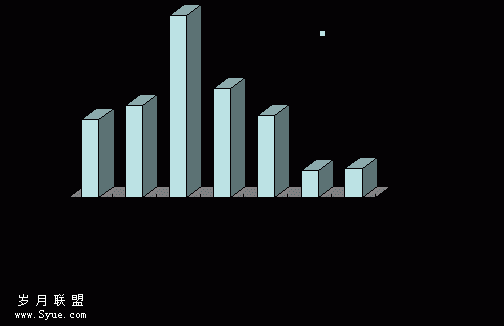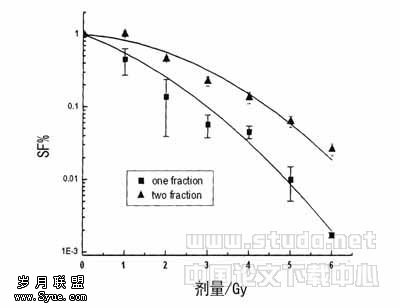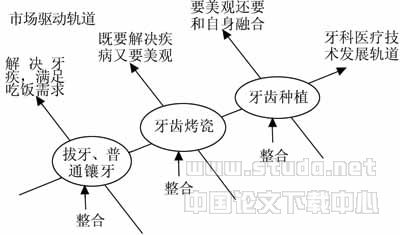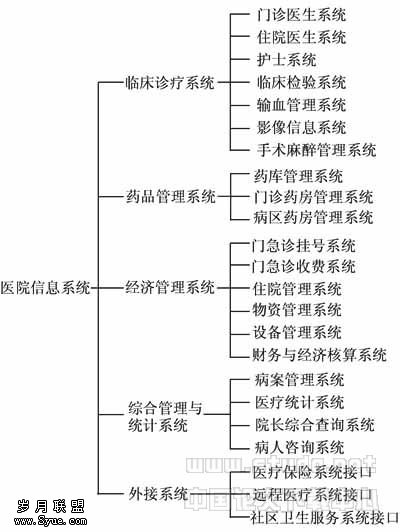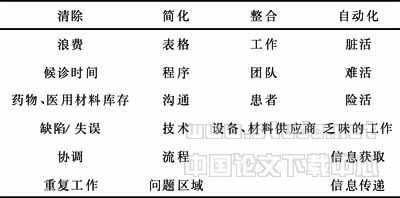Low-Grade Gliomas in Adults
作者:Jeanine T. Grier, Tracy Batchelor
【关键词】 Low-grade,glioma
Key Words. Low-grade glioma ; Astrocytoma ; Oligodendroglioma
ABSTRACT
Low-grade gliomas are a heterogeneous group of neoplasms usually encountered in younger patient populations. These tumors represent a unique challenge because most patients will survive a decade or more and may be at a higher risk for treatment-related complications. Clinical observations over the years have identified a subset of low-grade gliomas that tends to manifest more aggressive clinical behavior and require earlier, more aggressive intervention. Clinical and molecular parameters may allow better assessment of prognosis and application of risk-adjusted management strategies that may include resection, radiation, or chemotherapy. Improved methods of long-term cognitive and functional assessment are desperately needed in this patient population.
INTRODUCTION
Tumors of the central nervous system (CNS) are grouped according to their cell of origin and are graded based on standard histopathological features. Gliomas comprise a heterogeneous group of neuroectodermal tumors that arise from the glia, the supporting cells of the CNS. Astrocytes, oligodendrocytes, and ependymal cells are types of glial cells that may give rise to astrocytomas, oligodendrogliomas, and ependymomas, respectively.
According to the World Health Organization (WHO) classification, the most commonly accepted grading system for brain tumors, the surgical specimen should be assessed for atypical cells, mitoses, endothelial proliferation, and necrosis. Tumors with none of these characteristics are classified as grade 1. The more common gliomas in this class are pilocytic astrocytoma (PA), dysembryoplastic neuroepithelial tumor (DNET), pleomorphic xanthoastrocytoma (PXA), and ganglioglioma. Gliomas that possess only one feature, usually atypical cells, are grade 2. Astrocytoma, oligodendroglioma, and oligoastrocytoma fall into the grade 2 category. These tumors are also termed low-grade astrocytoma, low-grade oligodendroglioma, and low-grade oligoastrocytoma, respectively. A subset of gliomas may have both endothelial proliferation and atypia but are well circumscribed and slow-growing. These tumors are considered to be low-grade gliomas (LGGs) despite their departure from the typical classification scheme. LGG refers to tumors in either the grade 1 or grade 2 categories. Tumors with two or more features are considered malignant and are termed grade 3 or grade 4 gliomas.
LGGs include a diverse group of tumors within the brain, brainstem, and spinal cord, with distinct characteristics, patterns of occurrence, response to treatment, and survival. Patients with LGG tend to be young, otherwise healthy individuals, and management decisions, such as timing of intervention, extent of surgical resection, timing of radiotherapy, and long-term benefits and risks of chemotherapy, have been controversial. In this review, we outline the key issues of LGG management. For the purpose of this review, LGG refers only to supratentorial nonpilocytic astrocytoma, oligodendroglioma, and mixed oligoastrocytoma. Other subtypes―such as pilocytic astrocytoma, subependymal giant cell astrocytoma, brainstem glioma, and optic nerve glioma―have different clinical presentations, diagnostic algorithms, and treatments. These four subtypes are briefly discussed at the end of this review.
INCIDENCE
An estimated 43,800 new cases of primary CNS tumors were diagnosed in 2005 [1]. Gliomas accounted for 40% of all these primary CNS tumors [1]. Astrocytomas represent 75% of all gliomas, while ependymomas, oligodendrogliomas, and other glioma subtypes comprise the remaining 25%. The International Classification of Diseases for Oncology (ICDO)-3 does not identify separate histology codes for low-grade gliomas [2]. Since no ICDO-3 codes exist for LGG, specific incidence rates for low-grade oligodendroglioma and low-grade astrocytoma are difficult to determine. From a compilation of citations, the American Association of Neurological Surgeons (AANS) estimated that the annual number of pediatric and adult LGG cases diagnosed in the U.S., including pilocytic astrocytoma, diffuse fibrillary astrocytoma, oligodendroglioma, and oligoastrocytoma, is 1,800 [3].
In adults aged 2034, gliomas account for 45% of all CNS tumors. Astrocytomas as a group account for 18% and glioblastoma accounts for 6% of young adult tumors [1]. Incidence rates for glioblastoma, ependymoma, mixed glioma, and oligodendroglioma are over two times greater in whites than in blacks [1]. Currently, there is no compelling evidence for a strong association between environmental exposures and glioma development [4].
PRESENTATION
Most patients with LGG present between the second and fourth decades of life, and a seizure is the presenting symptom in 72%89% of patients [512]. Mental status changes are present in 3%30% of patients at the time of presentation [6, 10, 12]. Ten percent to 44% have signs of increased intracranial pressure, such as headache and nausea, when first diagnosed [6, 10, 11]. Focal neurological deficits are present in 2%30% of patients [6, 7]. However, patients may have normal neurological examinations.
DIAGNOSIS
Diagnosis is made through radiological imaging and histopathology. On contrast-enhanced computerized tomography (CT) scans, an LGG usually appears as a heterogeneous region of low attenuation that may or may not enhance. There may be mass effect on adjacent structures, and calcifications occur in up to 20% of oligodendrogliomas but are less common in astrocytomas [13]. On magnetic resonance imaging (MRI), LGGs are usually nonenhancing with low signal intensity on T1-weighted (Fig. 1A) and high signal intensity on T2-weighted MRI sequences. Calcifications may appear as foci of high T1 and low T2 signals. Fluid-attenuated inversion recovery (FLAIR) sequences show the best contrast between presumed infiltrating tumor margins and normal brain (Fig. 1B).
LGGs may enhance on neuroimaging studies. Conversely, the absence of enhancement does not always signify low-grade histopathology since up to one third of nonenhancing diffuse gliomas in adults are high grade [14, 15]. These tumors are also highly infiltrative, and one must assume that tumor cells extend beyond the radiographic border of the lesion [14, 16, 17]. Pirzkall et al. [13] demonstrated that metabolically active tumor is restricted mainly to the T2 hyperintensity in LGG, but can extend beyond the T2 border for up to 2 cm. LGG are characteristically located in white matter, but these tumors may also infiltrate into gray matter.
Histopathology
Histopathological evaluation of tumor tissue remains the standard method for diagnosis and classification of glioma (Fig. 2), but diagnostic challenges are well recognized, including subjective criteria, tissue sampling error, and lack of specific tumor markers [16, 1824]. In general, lesions detected on CT or MRI scans that could be consistent with a brain tumor should prompt neurosurgical consultation with a goal of achieving a tissue diagnosis. Exceptions might include lesions in critical locations, such as the brainstem, in which case a biopsy or resection is not possible. A stereotactic biopsy is often performed on an awake patient positioned in a stereotactic frame, over which an MRI or CT scan is obtained to compute the exact coordinates of the lesion. A small burr hole is made in the skull, through which several small tissue core samples are collected. In contrast, a craniotomy is performed under general anesthesia and allows the surgeon to obtain a specimen for diagnostic purposes as well as to resect the tumor and relieve mass effects, thereby gaining some therapeutic benefit.
A number of factors are considered when choosing between a stereotactic biopsy and craniotomy for resection [25]. Indications for stereotactic biopsy include: a deep-seated location not amenable to resection, ambiguous radiological and clinical information (i.e., the lesion might not be a tumor), a change in appearance of a previously diagnosed and treated tumor, multiple or diffuse lesions, an appearance that suggests lymphoma (which would not require resection), and finally, if the patient is not clinically stable enough to tolerate a craniotomy [26]. As mentioned above, because of the morphological heterogeneity of gliomas, stereotactic biopsy is limited by sampling error and may miss a higher grade component of a mixed lesion [16, 17, 2729]. Perfusion-weighted imaging may provide a useful guide as to which area of the LGG should be targeted for biopsy in an effort to reduce sampling error [30, 31]. Even with improved selection of a biopsy zone, the reproducibility of grading between two observers is lower for low-grade than for high-grade astrocytomas [32]. The benefits of a craniotomy include more accurate diagnosis based on full tissue evaluation, alleviation of mass effects, and possible treatment, all in one operation.
Molecular Markers
Genetic testing should be strongly considered for all low-grade oligodendrogliomas (LGOs) and oligoastrocytomas (LGOAs). Over the past decade, it has been shown that specific genetic markers are helpful in dividing gliomas into subgroups with respect to prognosis and response to chemotherapy. Oligodendroglial tumors frequently show loss of heterozygosity (LOH) on chromosomes 1p and 19q, reported in 50%70% of both low-grade and anaplastic tumors [33, 34]. LOH for 1p or LOH for both 1p and 19q is predictive of chemosensitivity and longer survival in patients with anaplastic oligodendrogliomas [35]. Loss of 1p and 19q has also been shown to be a favorable prognostic marker in LGO and LGOA [36, 37]. In a study of LGOs treated with temozolomide, there was a higher likelihood of responding to temozolomide, an oral methylating drug, if there was LOH for 1p [38]. Smith et al. [24] showed that combined loss of 1p and 19q is a statistically significant predictor of prolonged survival in patients with oligodendroglioma, independent of tumor grade.
Immunohistochemical Markers
Another proposed prognostic indicator is an immunohistochemical stain for proliferation-related nuclear markers, the Ki-67 antigen, or the MIB-1 antibody, both reactive against the Ki-67 nuclear antigen [39]. Immunohistochemistry for the Ki-67 antigen provides prognostic information that is independent of histopathologic grading and tumor localization [40]. Diffuse grade 2 astrocytoma typically has a Ki-67/MIB-1 of 1%2%, whereas WHO grade 4 astrocytoma often has a labeling index of 15%20% [41]. Age at diagnosis, extent of resection, postoperative performance status, and MIB-1 were all associated with survival in one study of oligodendrogliomas and oligoastrocytomas [42]. Significant differences in survival were found when patients with oligodendroglioma and oligoastrocytoma were separated into two groups based on whether their Ki-67/MIB-1 is 5% or >5% [43]. Despite this evidence, there are still conflicting opinions on the prognostic relevance of Ki-67/MIB-1 in LGG.
TREATMENT
Management of LGG is controversial because these patients are typically younger, with few, if any, neurological symptoms. Historically, when LGG was diagnosed in a young, healthy adult, a commonly accepted strategy was a "watch and wait" approach because of the indolent nature and variable behavior of these tumors. The support for this practice came from several retrospective studies showing that, when therapy was deferred, patients had no difference in outcome (survival, quality of life [QoL]) from time of radiologic diagnosis [7, 11, 44]. There was also a belief that LGGs did not necessarily transform into malignant tumors over time. However, the latter notion has been refuted. In retrospective studies of the kinetics of glioma growth, continuous growth was seen in the premalignant phase before anaplastic transformation [45]. The majority of LGGs are now known to progress to malignant gliomas with time. A better understanding of the natural history of LGGs has led to an interest in earlier treatment.
The decision as to whether a patient with LGG should receive resection, radiation therapy (RT), or chemotherapy is based on a number of factors including age, performance status, location of tumor, and patient preference. Since LGGs are such a heterogeneous group of tumors with variable natural histories, the risks and benefits of each of the three therapies must be carefully balanced with the data available from limited prospective studies.
Surgery
Tumor location determines resectability of LGGs. Tumors located in critical areas of the brain are typically nonresectable. For those LGGs that can be resected, the important question becomes how much tissue to resect in order to prolong survival, alleviate symptoms, and minimize the risk for neurological injury. Because there have been no randomized trials to determine the benefit of extensive resection of LGGs, current surgical management of these tumors is based on retrospective studies, expert opinion, or case reports [9, 4649]. In the early 1990s Berger et al. [48] analyzed preoperative and postoperative radiographic tumor volumes in 53 patients to evaluate whether the percentage of resection and volume of postoperative residual disease influenced the incidence of recurrence, time to tumor progression, or histology of the recurrent tumor. This retrospective study found that, in patients with preoperative tumor volumes <10 cm3, no recurrence was detected over a 3- to 4-year span, regardless of percent of resection and volume of residual disease [48]. All patients with a complete gross resection were recurrence free at a mean follow-up period of 54 months. In the remaining 40 patients, the percentage of resection was found to be inversely correlated with the incidence of recurrence, and there was also a shorter time to tumor progression in those with a larger volume of residual tumor [48].
Leighton and coworkers [50] retrospectively reviewed the records of 167 adults with LGGs and found that minimal residual tumor after surgery was associated with a significantly longer survival time in both univariate and multivariate analyses. In 2001, Keles et al. [47] conducted a comprehensive literature review to evaluate the prognostic effect of extent of resection and to determine if treatment-related guidelines could be established for the management of LGG. Of 30 studies that included statistical analyses and were published over a 30-year period (19702000), only five satisfied methodological criteria outlined by the authors. In all five studies the prognostic effect of extent of resection was found to be statistically significant by univariate analysis. In addition, the extent of resection was a significant prognostic factor by multivariate analysis in four studies [47]. It is not possible to quantify or eliminate the strong possibility of confounding and selection bias in these retrospective studies. Nevertheless, these observations represent the best information available at the present time regarding this topic.
Currently, the standard approach is to perform a gross total resection if technically possible[20, 49]. The risks and benefits must be weighed carefully because the surgical intervention itself may result in a transient or permanent decline in neurological function [51]. Surgical debulking is often recommended for any patient with increased intracranial pressure, neurological deficits related to mass effects, or uncontrollable seizures. It is important for the patient to understand that gross total resection does not mean the tumor has been completely removed [52]. LGGs are infiltrative tumors with indistinct borders and microscopic invasion beyond the radiographic margins. In the majority of cases, the area of tumor resection may be stable for years until a recurrence is detected by symptoms or imaging [5, 52]. The recurrence may occur in the same area as the prior tumor or in a separate location. Regular clinical and radiographic monitoring are essential in postoperative management.
Radiation
The critical questions regarding RT for patients with LGG are: timing, effective dose, and how to weigh the benefit of tumor control against potential toxicity [10, 50, 5356]. Three prospective randomized clinical trials have been conducted to address these questions.
The first randomized trial was conducted by the European Organization for Research and Treatment of Cancer (EORTC, trial 22844) to determine if a radiation dose response exists for LGG. In that study, 379 adults with LGG were randomized to receive different doses and schedules of RT after biopsy or resection, 45 Gy in 5 weeks versus 59.4 Gy in 6.6 weeks. There were no significant differences in progression-free or overall survival times between the two groups. Other findings of the EORTC 22844 trial included age as a significant prognostic factor for overall survival, but not progression-free survival, while the size of tumor, or "T" of the TNM classifications, appeared to be one of the most important prognostic factors on multivariate analysis [57, 58].
A second randomized trial, EORTC 22845, compared immediate RT for cerebral LGG in adults with RT after recurrence. In that study, 311 adult patients from 24 European centers were randomized after surgery to receive either 54 Gy in 1.8-Gy fractions over 6 weeks or no radiation until evidence of tumor progression was identified on imaging or suggested by neurological deterioration [59]. Postoperative CT scans were not routinely performed in that study, thus the residual amount of tumor could not be assessed. Twenty-two percent of the 232 tumors that were submitted for central pathological review in EORTC 22845 were reclassified as high-grade gliomas after being reviewed, and 3.4% were reclassified as ineligible tumors based on study protocol. Overall survival and time to progression were primary end points. Although overall survival at 5 years did not differ between the two groups, the median progression-free survival time was 5.3 years for the group receiving immediate RT versus 3.4 years for those with RT deferred [60]. In addition, seizures were better controlled in the early RT group. This study represents the first randomized trial to compare an active treatment with the "watch and wait" approach. Although immediate postoperative irradiation increased the median progression-free survival time by nearly 2 years, it is not clear whether longer progression-free survival represents better QoL.
The results of EORTC 22844 were partially confirmed in a randomized trial by the North Central Cancer Treatment Group (NCCTG)/Radiation Therapy Oncology Group/Eastern Cooperative Oncology Group [61]. In that study, 203 patients were randomized to receive either low-dose RT (50.4 Gy in 28 fractions) or high-dose RT (64.8 Gy in 36 fractions). These low and high doses differed from those used in the EORTC study. Of these 203 patients, 103 had undergone biopsy, 71 had subtotal resections, and 29 had gross total resections before starting RT. In addition, 139 patients had oligodendroglioma or mixed oligoastrocytoma (mainly oligodendrocytic), while 64 patients had astrocytoma or mixed oligoastrocytoma (mainly astrocytic). Interpretation of these results is limited by this tumor heterogeneity. However, this study did not find an advantage for high-dose over low-dose RT in adults with supratentorial LGG in terms of overall survival or time to progression [61]. The currently accepted treatment for LGG includes a radiation dose of 5054 Gy in fractions of 1.8 Gy to the tumor bed as well as a 1- to 2-cm surrounding margin.
In a small prospective study of whether RT was needed postoperatively, 18 patients with resected LGOs were managed with follow-up alone if full resection was achieved or chemotherapy if the tumor was incompletely resected [54]. In that study, all patients were alive and 94% were progression free after a median follow-up of 4.7 years, with no use of RT. Similar findings in other studies have led some to recommend RT for young patients only if there is recurrence of tumor and not in the immediate postoperative stage [62] because of the possible neurotoxic effects in long-term survivors [56]. However, there has not been a randomized trial using percentage of surgical resection to clarify this treatment recommendation.
Since the time of these original prospective studies, there have been major technical advances in the delivery of radiation. There is now computer optimization and intensity-modulated radiotherapy (IMRT), which allow different levels of intensity across a lesion [63]. In addition, functional imaging such as positron- emission tomography (PET) and single-photon-emission CT (SPECT), as well as dose-volume histograms allow physicians to more accurately plan target volumes and shape radiation beams [63]. With these technical improvements, it is hoped that RT will be more effective and long-term side effects of RT will be minimized.
Although stereotactic radiosurgery has been proposed to control small areas of recurrent malignant glioma, there are insufficient data to recommend radiosurgery as an effective treatment for LGG.
At this time, it is our practice to defer RT after complete surgical resection of an LGG with a low mitotic labeling index. In the case of incomplete resection, RT is recommended if there is an elevated mitotic labeling index or recurrence of tumor on follow-up imaging.
Chemotherapy
Most chemotherapeutic agents that are active against anaplastic glioma also have activity against LGG. A major advance relevant to the chemotherapeutic treatment for LGG was the discovery of the chemosensitivity of anaplastic oligodendroglioma based on chromosomal markers. Cairncross et al. [35] observed that 100% of tumors with chromosome 1p loss (24 patients) were chemosensitive and that 100% of those with loss of both 1p and 19q (22 patients) also responded to chemotherapy. The patients with the chromosomal losses also had significantly longer progression-free and overall survival times.
Several phase II studies have investigated the role of chemotherapy or the combination of chemotherapy and RT in LGG. One problem with assessing tumor response in these studies is that change in area-of-contrast enhancement has traditionally been used with studies of higher-grade glioma, yet as discussed earlier, LGGs do not typically enhance, thus complicating the measurement of response to chemotherapy [64]. FLAIR and T2 signal changes often reflect the combined effect of underlying tumor and gliosis, making response assessment more difficult.
Nine patients with LGO were treated with PCV (procarbazine, CCNU, vincristine) at presentation, except for one patient who was treated at the time of recurrence after failed RT [65]. Evaluation of response was based on clinical and radiological factors, including volumetric tumor measurements on T2-weighted MRI scans. Six patients had partial responses and three had stable disease, while no patient deteriorated during treatment. There were also notable improvements in seizure frequency and other neurologic symptoms [65].
A retrospective study by Stege et al. [66] of PCV chemotherapy in 16 patients with newly diagnosed LGO and LGOA along with five patients with recurrent disease showed "clinical" response regardless of 1p or 19q status. Nine of these patients had gliomatosis cerebri. These authors recommended chemotherapy for LGO patients with large tumors not amenable to RT.
Several studies have addressed the use of temozolomide in the treatment of recurrent or progressive LGG [38, 6770]. Temozolomide is approved for the treatment of recurrent anaplastic astrocytoma and newly diagnosed glioblastoma. Phase II studies have provided evidence of excellent patient tolerance and potential efficacy in LGG, but comparison studies versus other chemotherapeutic agents or RT have not been done. In a phase II study by Brada et al. [69], temozolomide resulted in a modest improvement in QoL and improvement in seizure control.
Another issue in the treatment of patients with LGG is whether a combination of chemotherapy and RT is superior to RT alone [71]. A prospective trial by the Southwest Oncology Group addressed this question in 60 adult patients with incompletely resected LGGs. Patients were randomly divided into two treatment groups. Patients received either 55 Gy of RT alone or 55 Gy of RT-plus-lomustine. There was a reduction in tumor size in 79% of patients in the RT group versus 54% of the RT plus lomustine group, based on CT scan measurements. However, there was no difference in median survival between the two treatment groups [72]. This study did not separate different histologic subtypes for analysis, and anaplastic astrocytoma was included as an eligible tumor, which complicates interpretation of the results. The study was closed early because of slow accrual and a rejection of the hypothesis of a 50% longer survival time for patients receiving chemotherapy [72].
Newer agents, such as signal transduction inhibitors, angiogenesis inhibitors, monoclonal antibodies, immunotoxins, and gene transfer therapies, as well as new approaches to drug delivery, such as drug-impregnated sustained-release polymers and convection-enhanced delivery, remain to be investigated in LGGs.
PROGNOSIS IN LOW-GRADE GLIOMAS
The prognosis for patients with LGG is more favorable than that for higher-grade gliomas because of the more indolent course and younger age at which most patients are diagnosed. The three largest randomized trials mentioned previously all included overall survival as a primary end point. EORTC 22844, EORTC 22845, and the NCCTG trial together studied 836 patients with LGG, and 58%72% of patients were alive at 5 years from the time of diagnosis. The EORTC conducted a detailed analysis of prognostic factors for overall survival based on the 22844 and 22845 studies. That analysis excluded patients with WHO grade 1 astrocytomas and was conducted over a longer follow-up than either of the two original studies. Factors that negatively affected survival were: age >40 years, astrocytoma histology, maximum tumor diameter 6 cm, tumor crossing the corpus callosum, and the presence of a neurological deficit before surgery. Based on these factors, the EORTC proposed a multivariate prognostic score that would separate patients into risk categories. Patients with two or fewer prognostic factors were deemed low risk, and their median overall survival time was 7.7 years. Patients with three or more prognostic factors were judged to be high risk, and their median overall survival time was 3.2 years [73]. The NCCTG identified tumor size, histologic subtype, and age as substantial prognostic factors in their group of patients. The median survival time for their entire cohort of 203 patients was 9.25 years [61].
SPECIAL TOPICS
Pilocytic Astrocytomas
Pilocytic astrocytomas (PAs) are well-circumscribed solid tumors that occur most frequently in children and young adults but rarely in those over the age of 30 years (Fig. 3). These tumors have also been termed juvenile pilocytic astrocytomas or cystic astrocytomas, or have been named according to location (e.g., optic nerve gliomas, cerebellar astrocytomas, etc.). PAs represent 1.9% of all reported brain tumors and 5.7% of all gliomas [1]. PAs may also be associated with neurofibromatosis-1 (NF-1), an autosomal dominant genetic disorder in which patients are at high risk for cranial and peripheral nerve sheath tumors. The mean age at diagnosis of PA is 17 years, and the survival rate is very good, with 84.3% of patients alive 10 years after diagnosis [1]. Supratentorial PAs are characteristically located in the region of the optic nerves or chiasm as well as in periventricular regions such as the hypothalamus and thalamus. PAs may also occur in the spinal cord either as a primary site or as a site of metastatic spread.
Although macroscopically PAs appear well demarcated, these tumors may infiltrate surrounding tissue on the microscopic level. Microscopic infiltration is seen in adult forms of PA but is rarely seen in juvenile PA [74]. Multicentric spread is well documented, and patients with hypothalamic region tumors are up to 23 times more likely to develop multicentric spread than those with PAs elsewhere [75]. One third of tumors form a large cyst with clear fluid and sometimes a mural nodule [76]. PAs frequently enhance on MRI because of their vascularity, but there is usually minimal associated edema. Malignant transformation and metastatic spread are rare.
Clinical Features
Most patients present within the first three decades of life. Because PAs have a tendency to develop in midline peri-ventricular zones, patients may present with evidence of obstructive hydrocephalus. If the tumor occurs in an infratentorial location, the patient may present with symptoms of increased intracranial pressure or cerebellar dysfunction. Association with NF-1 should be excluded in all cases. Seizures, headaches, cranial nerve deficits, and rarely, hemorrhage, may also be part of the patient’s initial clinical presentation.
Treatment
The majority of PAs are amenable to gross total resection and cure. The best predictor of outcome is extent of resection, with >90% 10-year survival rates in patients with gross total resection of cerebellar PAs. Chemotherapy or RT may be recommended if there is residual tumor after resection. Focal irradiation at a total dose of 5456 Gy is recommended in adults and children over the age of 5 years [75]. In patients with subtotally resected PAs, the incidence of recurrence in a site different from the primary site is approximately 12% [75]. MRI of the craniospinal axis and cerebrospinal fluid (CSF) examination should be routinely performed in patients with PAs.
Subependymal Giant Cell Astrocytoma
Subependymal giant cell astrocytomas (SGCAs) are almost always associated with tuberous sclerosis. Tuberous sclerosis is an autosomal dominant neurocutaneous disorder characterized by mental retardation, seizures, facial angiofibromas and SGCAs. SGCAs are firm, slow-growing, well-circumscribed tumors typically located in the walls of the lateral ventricles near the foramen of Monro (Fig. 4). There may be associated cyst formation, hemorrhage, necrosis, or calcification. On MR images, the tumors usually appear as intraventricular enhancing masses. On histological examination, the tumors consist of giant astrocytes without significant anaplasia.
Clinical Symptoms
Because these tumors typically obstruct CSF flow, patients usually become symptomatic with hydrocephalus or increased intracranial pressure during the first and second decades of life. Diagnosis of an SGCA is occasionally the presenting feature of tuberous sclerosis.


